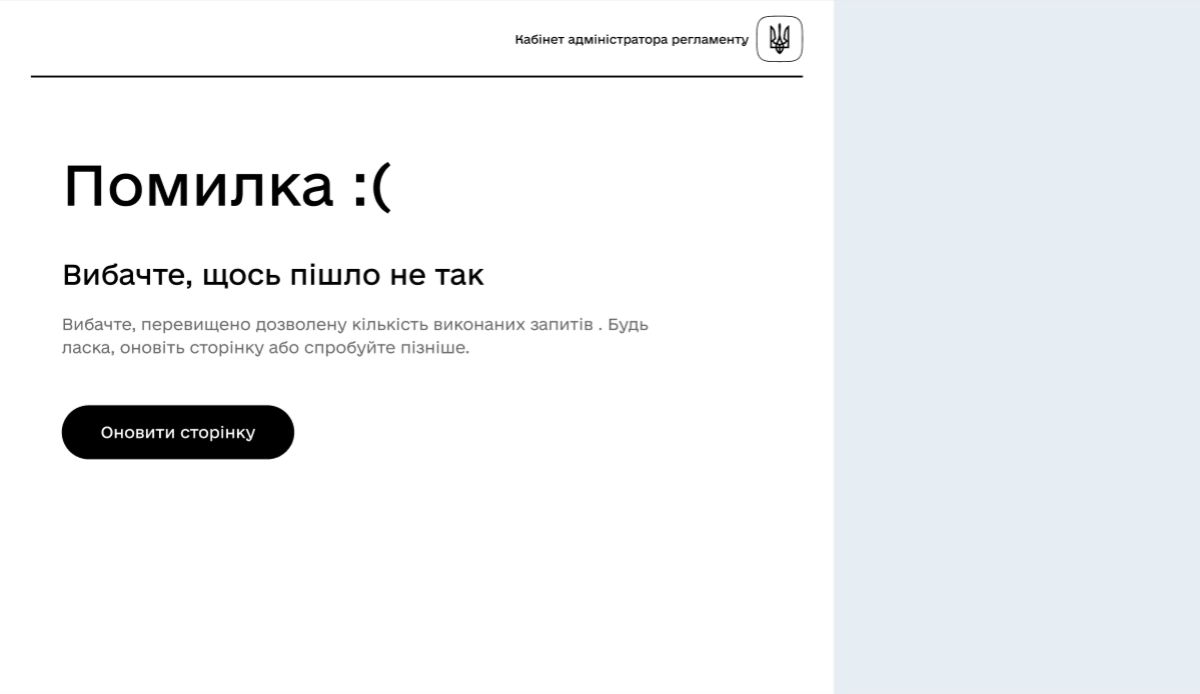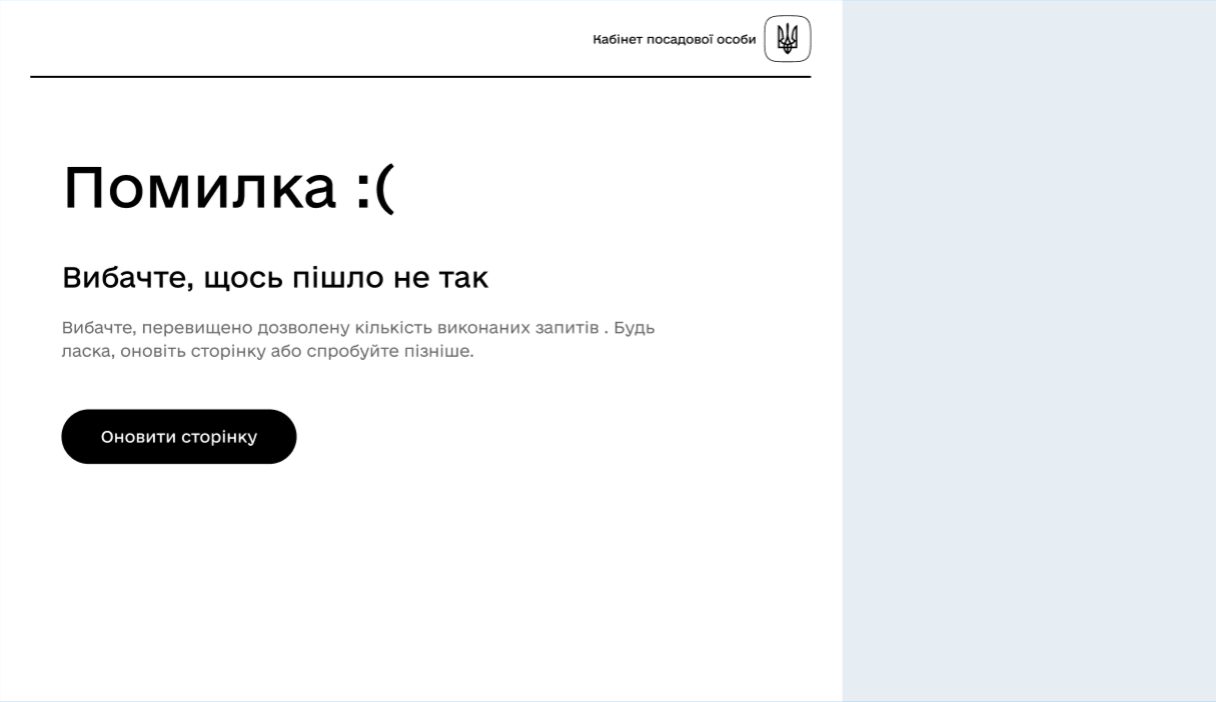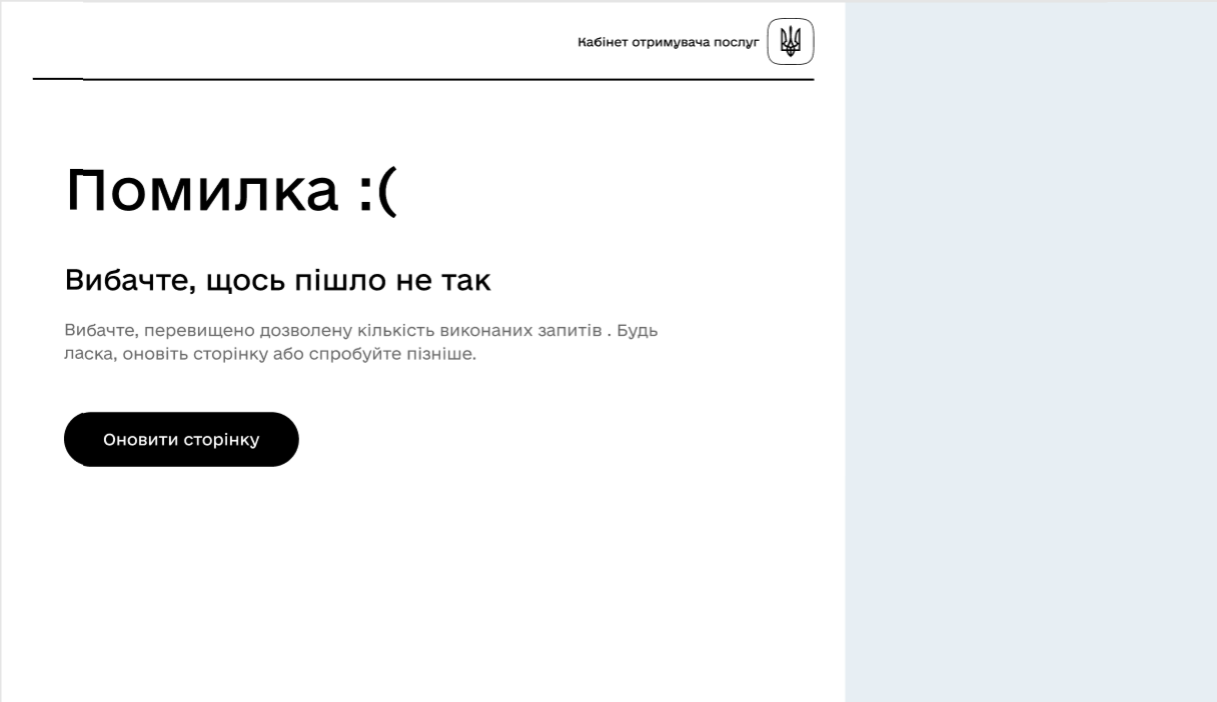API Rate Limits: Restricting the number of requests per time unit
| 🌐 This document is available in both English and Ukrainian. Use the language toggle in the top right corner to switch between versions. |
1. Overview
| Rate limiting is a network traffic limiting strategy. |
API rate limits are limits of the number of HTTP requests to the service or route per a defined period. It is set in seconds.
The mechanism of API Rate Limits is based on the Rate-Limiting-plugin for Kong API Gateway. If the service/route does not have an authentication level, the limit will be set for the client’s IP address. Otherwise, the HTTP header can be used for limiting, for example, user ID, user role ID, or user organization ID.
|
It is imperative that the rate-limiting plugin is executed after the OIDC-plugin! This means that the OIDC-plugin priority must be higher than the rate-limiting plugin priority, which is 910 by default. The mechanism is described in detail further. |
|
All rate-limits are calculated within one Kong API Gateway instance. If there are n Kong API Gateway instances, then the general number of requests from the user can be n times the set limit value. Kong API Gateway is deployed on the registry services level. |
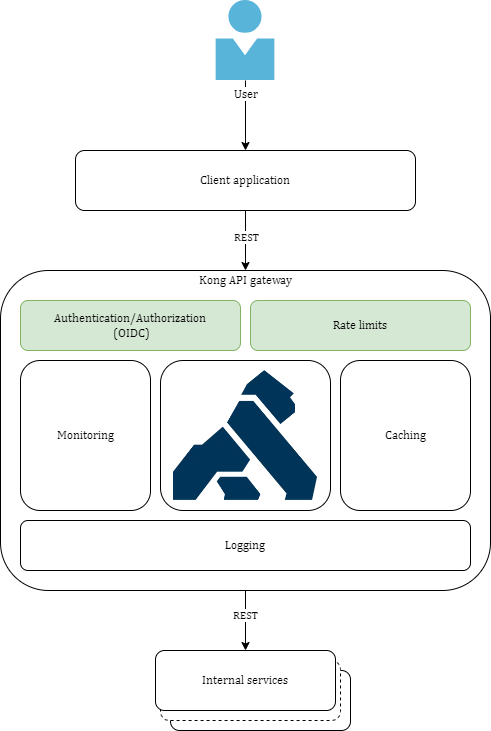
2. Rate-limits operation principle for non-authenticated users
Limits can only be set by IP address for non-authenticated users (config.limit_by: ip).
-
The user sends a request to the platform. The request goes to Kong API Gateway.
-
The request is processed by the Kong Rate-Limiting plugin, which decides if the request limit was achieved by the user, based on the given service/route rules.
-
If the user did not achieve the request limit, the request is rerouted to the corresponding service for processing.
-
The user receives a response from the service. .If the user achieved the request limit, the Rate-Limiting plugin responds with the
HTTP 429error.
3. Rate limits operation principle for authenticated users
If the service/route has an authentication level, then the limit can be set not only for IP-address, but for any authenticated user or user group.
In this case, the request’s own "token-claim" header value can be used to calculate the limit, as the header contains user data, such as user ID, role, organization ID, etc. This header can be added using Kong OIDC-plugin.
-
The user sends a request to the platform. The request goes to Kong API Gateway.
-
Kong OIDC-plugin gets to process the request, checking user session.
-
If the user was successfully authenticated (active session present), then the OIDC-plugin adds two headers to the request: one with the user’s JWT-tokens, and one
"token-claim"that contains the claim attribute value from the user’s access token. From this point, the rate-limiting plugin will use the"token-claim"header to calculate rate-limits for the authenticated user, or user group. -
The request goes to Rate-Limiting plugin for processing.
-
The Rate-Limiting plugin decides if the request limit was achieved by the user, based on the given service/route rules.
-
The limit can be set by IP-address, as well as
"token-claim"header value. -
If the user did not achieve the request limit, the request is rerouted to the corresponding service for processing.
-
The user receives a response from the service. .If the user achieved the request limit, the Rate-Limiting plugin responds with the
HTTP 429error.
Setting up header for authenticated user
The values of "token-claim" header that contains user info can be used to calculate limits for authenticated users. You can set the values via Kong OIDC-plugin configuration. The header can include the value of root attribute (claim) from the user’s access JWT-token.
config:
token_claim_header_value: "sub"In this case, "token-claim" header will be added after processing the request by OIDC-plugin. The header will be taken from the "sub" (claim) attribute of the user access token.
As a result, we get a "token-claim" header that contains user ID. This header can be used in the rate-limiting plugin to calculate limit by user ID.
config:
limit_by: header
header_name: "token-claim"For more complex limit calculations, you can add your own dedicated attribute to the JWT-token. This is done via Keycloak protocol mappers.
4. Configuring rate-limits
4.1. Rate-limits configuration mechanism
The mechanism is based on Rate-Limiting-plugin for Kong API Gateway.
Kong Rate-limiting is a part of Kong API Gateway and is deployed along with it.
- The Rate-limits configuration mechanism goes as follows:
-
-
The administrator creates and edits the configuration file in .yaml (.yml) file for OIDC and Rate-Limiting plugins Kong API Gateway.
-
Changes are saved in the corresponding catalog of Gerrit-repository.
-
Jenkins checks the repository for changes and applies the changed configuration for all the deployed instances of Kong API Gateway within the registry.
Example 5. Rate-limit configuration scheme
-
|
To configure limits for authenticated users or user groups assembled by a certain attribute, you need to add header with said attributes to the request. Based on the attribute values, the Rate-Limiting plugin will calculate limits for each authenticated user or group individually. Use OIDC-plugin to add the headers with user attributes, as it allows you to add your own |
4.2. The process of configuring limits in values.yaml
Rate-limits are configured in the values.yaml configuration file, in the deployment template of the corresponding registry. Registry deployment metadata is stored in the control-plane-gerrit component — central Gerrit repository.
|
As an example, let’s look at the |
|
-
Open the central Gerrit repository
control-plane-gerritin a local environment. -
Open the configuration file of the corresponding registry deployment template.
The route to the file would look similar to this:
resources/repositories/templates/registry-tenant-template-<registry-template-name>.git/deploy-templates/values.yaml
As an example we’ll use the registry-tenant-template-registry-dev-minimal.git template for registry deployment with the corresponding resources (minimal configuration). 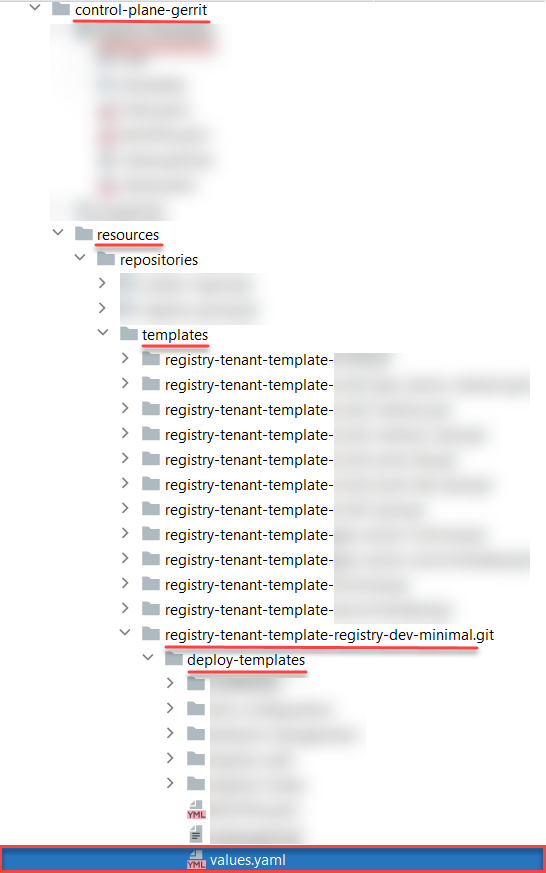
-
Activate the Rate-Limiting plugin by setting
rateLimitingPluginEnable: true.The rate-limit functionality limits the amount of requests per time unit from the webportals (Officer portal, citizen portal, etc.) to the external services APIs of the registry. -
By default, the Kong Rate-Limiting plugin configuration looks as follows:
Example 6. Configuring values.yml for Kong Rate Limiting pluginkongPluginsConfig: rateLimitingPluginEnable: false pluginsRateLimitByHeaderRequestsPerSecond: 10 pluginsRateLimitByHeaderRequestsPerHour: 10000 pluginsRateLimitByHeaderPolicy: "local" pluginsRateLimitByHeaderFaultTolerant: "true" pluginsRateLimitByHeaderHideClientHeaders: "false" pluginsRateLimitByHeaderHeaderName: "token-claim" pluginsRateLimitByIpRequestsPerSecond: 10 pluginsRateLimitByIpRequestsPerHour: 10000 pluginsRateLimitByIpPolicy: "local" pluginsRateLimitByIpFaultTolerant: "true" pluginsRateLimitByIpHideClientHeaders: "false"This configuration shows rate-limits per second and hour by:
-
Header (
ByHeader) — only for authorized users —pluginsRateLimitByHeaderRequestsPerSecondandpluginsRateLimitByHeaderRequestsPerHourparameters, accordingly; -
IP-address (
ByIp) — for all users —pluginsRateLimitByIpRequestsPerSecondandpluginsRateLimitByIpRequestsPerHourparameters, accordingly.
For proper plugin operation, the limit valiues for LimitByHeaderandLimitByIPparameters must be identical.The full list of Kong Rate-Limiting plugin configurations and capabilities is available here. -
-
After configuring, perform a commit into the corresponding repository.
5. Displaying errors on Portal forms on exceeding the service request limits
Exceeding the number of permitted requests from the admin-portal, officer-portal, and citizen-portal to backend API services causes errors that are displayed in the UI.
If the rate limit is exceeded when trying to access portal pages, the access is blocked, and the user is redirected to HTTP 429 error page.
